Production guru Bruce Aisher explains how to tune drums to suit your tracks.
Tuning drum hits in dance music is sometimes seen as a mysterious art – even when it comes to kicks and toms with clearly defined pitches. But tuning, and fine-tuning, is fundamental to a solid groove, and talented beatsmiths spend a long time tweaking the pitches of the hits in their grooves.
The tuning of drum hits not only affects how a beat relates to the bassline, chords and other melodic elements, it also determine the overall sound and feel – and cohesion – of the drum mix.
Whether you use samples in a DAW, synthesised sounds from a drum plugin or a hardware drum machine, this guide outlines the basics behind tuning kick drums, toms, snares, claps and hi-hats when making dance music.
Why Tune?
There are many different approaches to drum kit tuning. First off, let’s consider how ‘real’ drummers tune their kits. Many drummers have their own preferences when it comes to tuning their kicks, toms and snares, but this is often independent of musical context. Drummers can’t be expected to retune their kits to play songs in different keys, so it’s always a compromise between pitch, tone, resonance and damping.
Realistic drum plugins such as Toontrack’s EZdrummer follow a similar approach, with the drum samples simply tuned to sound ‘good’ (click images to enlarge):
However, for electronic music production, we usually want more control over the pitch of our drum samples. One of the easiest methods is to transpose all the drums in one go – something that’s very easy to do when using sampled drum hits from one plugin. By adjusting all the drums simultaneously you can try and find the frequencies which work best in the context of a track.
Logic’s EXS-24 makes the process simple with a master tuning control:
Although it’s more complicated to do this if your drum hits are placed on audio tracks, you can always copy individual elements to a sampler for more immediate control. FXpansion Geist, NI Battery and Steinberg’s Groove Agent ONE are relatively simple but effective drum samplers:
Can You Kick It?
So far so good, but why do you need to retune drums? Let’s explore the merits of retuning a kick drum to fit the key of a specific track. The ease with which this can be done really depends on the various musical elements used.
Here’s the bassline we’re working with:
And here’s how it sounds with our kick drum:
Let’s try transposing the kick drum up one semitone:
Or down one semitone:
What we’re looking for here is a sweet spot where the kick sounds in tune with the bass and their frequencies don’t clash. This won’t necessarily mean pitching up or down by whole semitones – you’ll probably need to use the fine tuning control to adjust by cents (fractions of a semitone).
Kicks with a more clearly discernible pitch – such as long, booming 808s – will usually require more care than shorter, clickier samples. As an aside, consider the fact that the TR-808 doesn’t actually have a pitch control for the kick drum. Many owners of the real thing find themselves restricted to writing tracks in the same key in order to make the rest of the elements work with the 808’s kick.
A neat trick for making the job a little easier here is to transpose the kick upwards by one or two octaves, do the fine tuning, then transpose it back down by the same amount. It tends to be easier to determine the pitch of the drum hit and hear how nicely it interacts with bass notes when it’s transposed up an octave or two.
Here’s how the kick sounds transposed up an octave ready for retuning:
And how it sounds after fine-tuning:
Then transposed back down to the starting octave, but with the fine-tuning control left in its new position:
How Low Can You Go?
Some tracks make a feature of the drums and their tuning – the kick may even become the bassline (again, a great trick with sampled 808 kicks). Here we’ve mapped a kick drum across the keyboard in Groove Agent ONE:
And here’s how it sounds when played as a bassline:
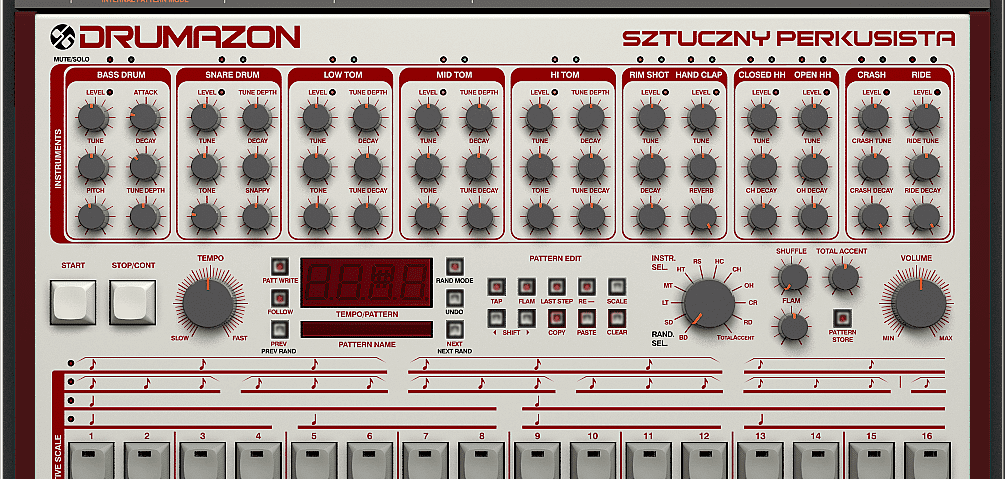
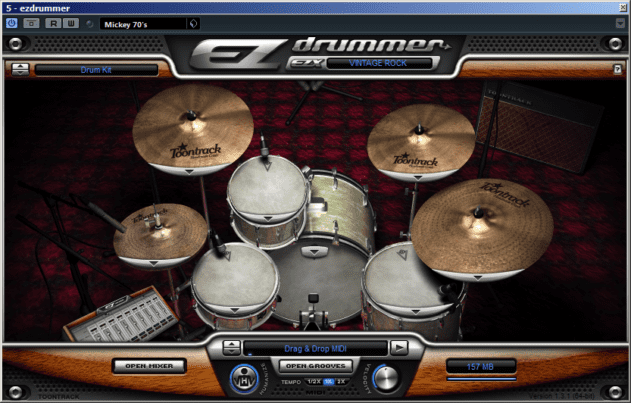
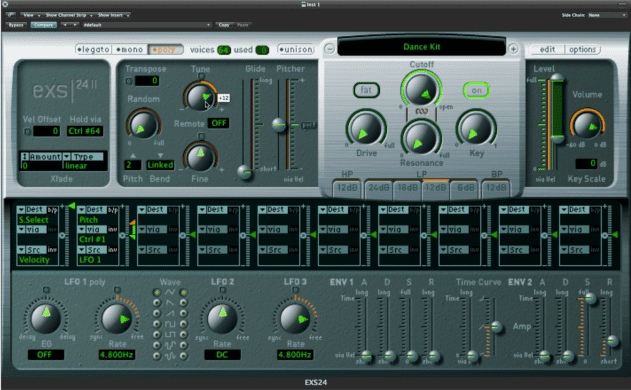
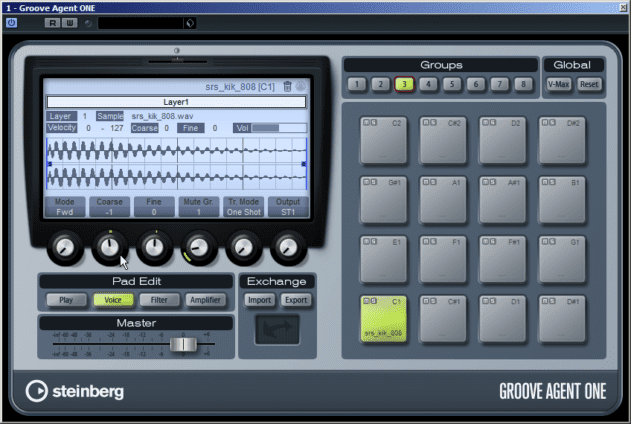
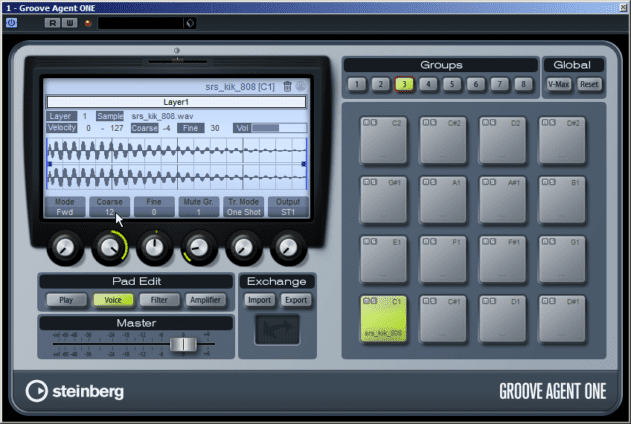
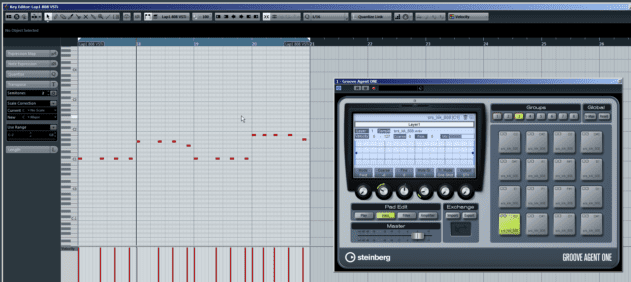
03.50 PM
🙂 thx! great walkthrough
06.33 AM
So, should we tune the kick the same root note as the baseline? Or 5 semitones apart?
11.16 AM
So the kick drum does not need to tuned to to the same root note of the bass ?or is it ok as long as its in the same scale ?
06.36 PM
Jeezer):
You would want the kick to be in the same as the tonic (root) note. The root note of your key is the anchor of the baseline and is the resolution point for any melodies, so There kick, being the anchor of your drums, and playing every four beats (assuming you’re making 4 on the floor dance music) should be tuned to the root note.
I have a question though…
What octaves should the sub hum of a kick be in? As subwoofers don’t typically go past @125 Hz, I’m guessing Octave 1 or 2?
12.20 PM
You would usually want the kick and bass tuned to the same note as each other , but this doesn’t have to be the root note of the key you’re working in for your track. A lot of dance music actually tunes the sub of the kick and the bass to the 5th note of the scale and it”s common in Techno to actually tune to the 7th note of the scale.
E.g – if you’r track is in F minor, you could tune the kick & bass to C (5th note) or D# (7th note).
As for the octaves, I would say Octave 1, anything higher is probably too high for ‘sub’ bass frequencies?
01.23 AM
This is total bullshit from ppl with no hearing.Up or down a semitone on a kick is NOT going to make your track sound out a tune.Drummers in cover bands don’t retune their kick for each different song!!! Another stupid theory from ppl with no
musical knowledge!!
05.28 AM
How do you tune a full drum beat (for example, to put it in the key of C), when all of the drum hits make the tuner readout bounce all over the place? I understand getting a solid readout when it’s just one drum sound, or one bass sound, but the whole beat alludes me. I’m using the MeldaProduction MTuner in this case.
08.05 AM
I do love when people try and spit in the face of modern audio production techniques. You’re literally suggesting that harmonically unrelated sounds are more pleasant than tuned and harmonically related sounds.